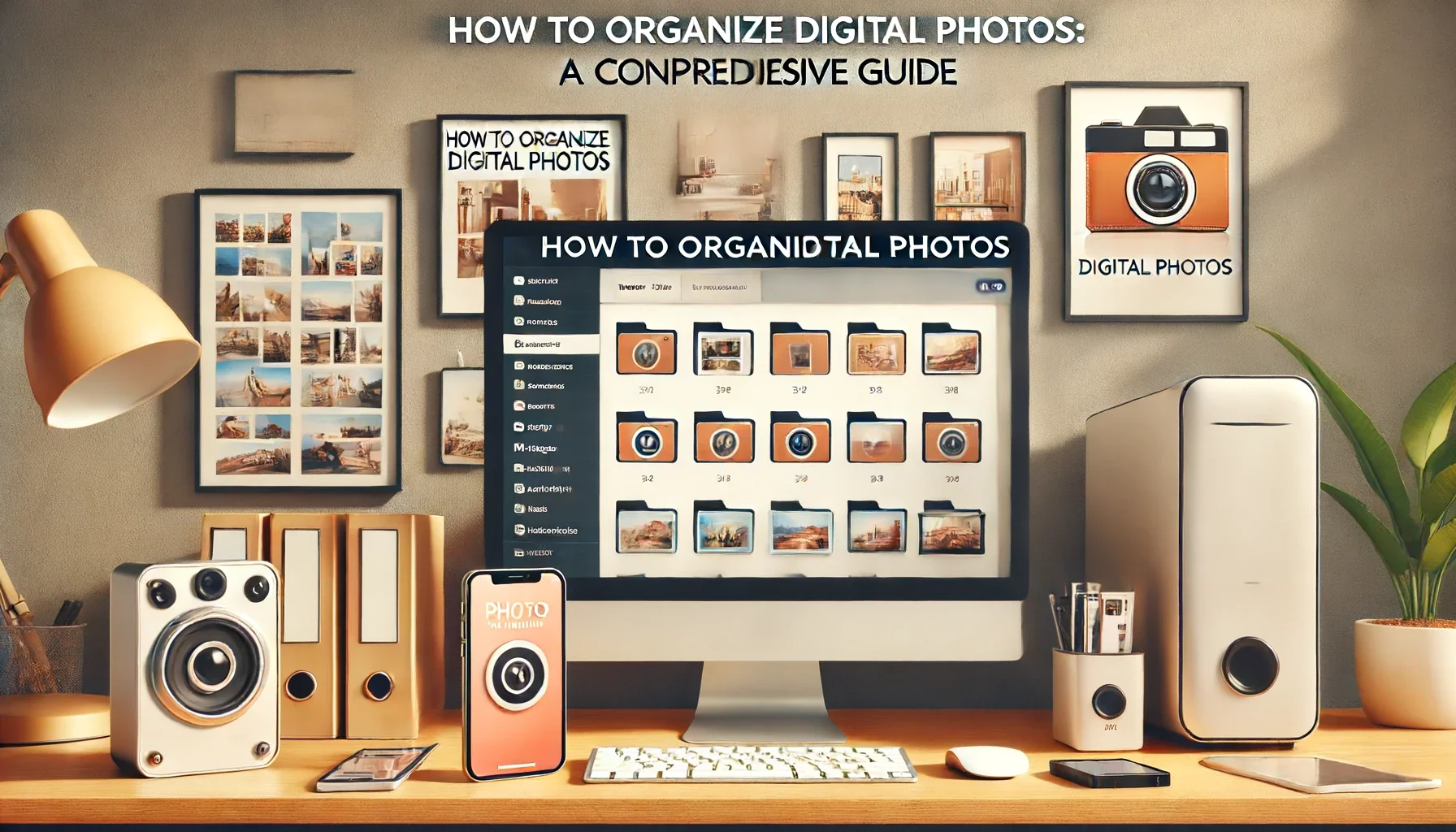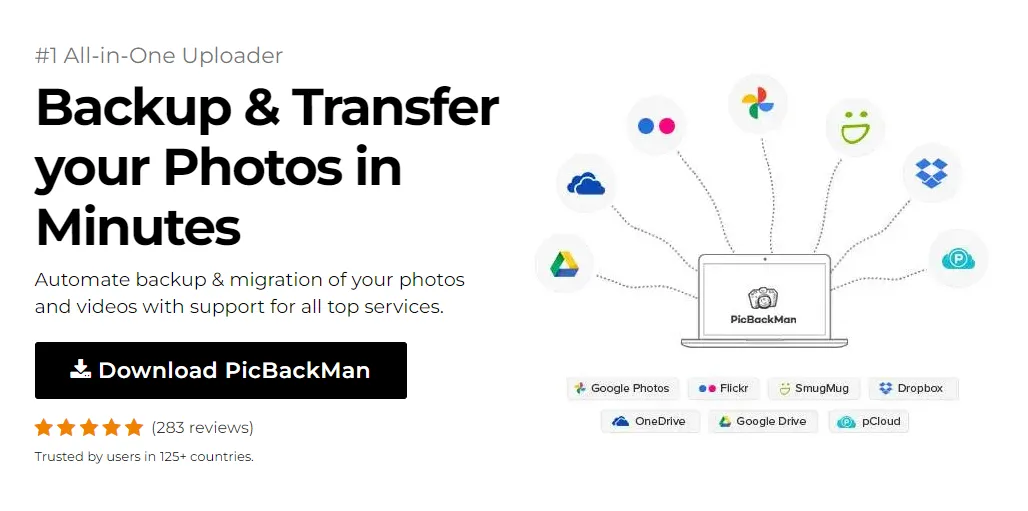
Why is it the #1 bulk uploader?
- Insanely fast!
- Maintains folder structure.
- 100% automated upload.
- Supports RAW files.
- Privacy default.
How can you get started?
Download PicBackMan and start free, then upgrade to annual or lifetime plan as per your needs. Join 100,000+ users who trust PicBackMan for keeping their precious memories safe in multiple online accounts.
“Your pictures are scattered. PicBackMan helps you bring order to your digital memories.”
How to Organize Digital Photos?


In today's digital age, our lives are documented more than ever through photographs. Whether it's a family vacation, a friend's wedding, or a simple day out, our digital devices capture countless moments. However, with the ease of taking photos comes the challenge of managing them. Without a proper system in place, your digital photo library can quickly become overwhelming. This comprehensive guide will walk you through the best practices on how to organize digital photos, ensuring you can easily find and enjoy your memories.
The advent of digital photography has revolutionized the way we capture and store memories. Gone are the days of physical photo albums and film rolls; today, our photos are stored on various devices, from smartphones to cloud services. While this offers unparalleled convenience, it also poses a significant challenge: organization. An unorganized photo collection can make it difficult to locate specific memories, share photos with friends and family, or simply enjoy your collection. In this guide, we'll explore practical steps and strategies to help you organize your digital photos effectively.
How to Organize Digital Photos
When it comes to organizing digital photos, the process can seem daunting. However, with a systematic approach, you can transform your chaotic photo library into an orderly and accessible collection.
Set Up a Filing System
A well-structured filing system is the cornerstone of an organized digital photo library. Start by creating a master folder for your photos. Within this folder, establish a hierarchy of subfolders based on categories such as year, event, or location. For example:
- 2023
- Family Vacation
- Birthday Party
- 2022
- Wedding
- Graduation
This structure allows you to quickly locate photos based on time or event, making your collection much more navigable.
Rename Your Files
Default filenames generated by cameras and smartphones can be cryptic and unhelpful. Renaming your files with descriptive names can make a significant difference. Include relevant details such as the date, location, and subject. For instance, instead of "IMG_1234.jpg," use "2023-06-15_Beach_Vacation_Family.jpg." This practice not only makes it easier to find specific photos but also provides context at a glance.
Use Tags and Metadata
Tags and metadata are powerful tools for organizing digital photos. Most photo management software allows you to add tags, keywords, and descriptions to your photos. Use these features to categorize your photos based on themes, people, or locations. For example, you can tag all photos of a family member with their name, making it simple to pull up all photos of that person later.
Choose the Right Software
Investing in good photo management software can streamline the organization process. Programs like Adobe Lightroom, Apple Photos, and Google Photos offer robust tools for organizing, editing, and sharing your photos. Look for software that suits your needs, whether it's advanced editing features, cloud storage, or seamless integration with your devices.
Back Up Your Photos Regularly
No organization strategy is complete without a solid backup plan. Digital photos are vulnerable to loss due to device failure, accidental deletion, or cyber threats. Ensure you have multiple backups of your photo collection. Use a combination of external hard drives, cloud storage services, and even physical media if necessary. Regularly update your backups to include new photos and changes.
Delete Unnecessary Photos
One of the most effective ways to maintain an organized photo library is by regularly purging unnecessary photos. Duplicate shots, blurry images, and irrelevant pictures take up valuable space and clutter your collection. Set aside time periodically to review and delete these photos. This practice not only frees up storage but also keeps your collection focused and relevant.
Create Albums and Collections
Albums and collections are excellent tools for grouping related photos. Whether it's a specific event, a vacation, or a project, creating albums can help you easily access and share sets of photos. Digital albums are versatile and can be created, edited, and shared effortlessly through most photo management software.
Maintain Consistency
Consistency is key to a well-organized photo library. Develop a routine for uploading, categorizing, and backing up your photos. Stick to your filing system, use consistent naming conventions, and regularly update tags and metadata. By maintaining a consistent approach, you'll find it easier to manage your collection over time.
How to Organize Digital Photos on Different Devices
With photos often scattered across multiple devices, consolidating them into a single, organized library is crucial. Here's how to manage your photos on different platforms:
Smartphones and Tablets
- Automatic Uploads: Enable automatic uploads to a cloud service like Google Photos or iCloud. This ensures your photos are backed up and accessible from any device.
- Regular Transfers: Periodically transfer photos from your device to your primary storage solution, whether it's a computer or an external hard drive.
- Use Apps: Leverage photo management apps to organize and edit your photos on the go.
Computers

- Centralized Storage: Store all your photos in a central location on your computer. Use a dedicated folder and subfolders as outlined earlier.
- Regular Backups: Schedule regular backups to an external drive or cloud service.
- Photo Management Software: Utilize software like Adobe Lightroom or Apple Photos to manage and organize your photos efficiently.
Cloud Services
- Sync Across Devices: Choose a cloud service that offers seamless synchronization across all your devices.
- Organize Online: Use the organization tools provided by the cloud service to categorize and tag your photos.
- Backup: Ensure your cloud service includes automatic backup options to protect your photos.
How to Organize Digital Photos for Different Purposes
Depending on your needs, the way you organize your photos might vary. Here are some specific strategies for different purposes:
Personal Use
- Events and Milestones: Create folders and albums for significant events and milestones in your life, such as birthdays, vacations, and holidays.
- Chronological Order: Organize your photos in chronological order to create a visual timeline of your memories.
- Family and Friends: Use tags and albums to group photos of family members and friends for easy access.
Professional Use
- Client Projects: For photographers and designers, create separate folders for each client and project. Include subfolders for raw images, edited photos, and final deliverables.
- Portfolio: Maintain a well-organized portfolio folder with your best work. Use tags and metadata to highlight different themes and styles.
- Workflows: Develop a consistent workflow for importing, editing, and exporting photos to streamline your process.
Hobbies and Interests
- Themes and Subjects: Organize your photos based on themes and subjects, such as nature, travel, or sports.
- Projects: If you undertake specific photography projects, create dedicated folders and albums for each project.
- Inspiration: Maintain a folder or album for photos that inspire you. Use tags and metadata to categorize them based on the type of inspiration.
Quick Tip to ensure your videos never go missing
Videos are precious memories and all of us never want to ever lose them to hard disk crashes or missing drives. PicBackMan is the easiest and simplest way to keep your videos safely backed up in one or more online accounts. Simply Download PicBackMan (it's free!), register your account, connect to your online store and tell PicBackMan where your videos are - PicBackMan does the rest, automatically. It bulk uploads all videos and keeps looking for new ones and uploads those too. You don't have to ever touch it.
FAQs
How do I sort thousands of digital photos?
Sorting thousands of digital photos can be a daunting task, but it's manageable with the right approach. Start by creating a backup of your entire photo collection, then use photo management software to sort and categorize your photos based on criteria like date, location, or event. You can also leverage features like facial recognition and geotagging to automatically group and organize your photos. Break the process into smaller, manageable chunks to avoid feeling overwhelmed.
How do I organize my 30 years of digital photos?
Organizing 30 years' worth of digital photos requires a systematic approach. Begin by creating a folder structure based on years, and then subdivide each year into smaller categories like months, events, or locations. Use descriptive file names and leverage metadata to make it easier to search and sort your photos. Consider scanning and digitizing any old physical photos to consolidate your entire collection. Enlist the help of family members or consider outsourcing the organization process if the task becomes too overwhelming.
What is the most efficient way to organize photos?
The most efficient way to organize photos involves a combination of strategies. Utilize photo management software with features like automated tagging, facial recognition, and geotagging to streamline the process. Establish a consistent naming convention and folder structure that aligns with your needs and preferences. Regularly back up your photos to prevent data loss, and embrace metadata to enhance searchability and organization. Develop a consistent workflow that fits your habits, and consider outsourcing the organization process if it becomes too time-consuming.
How do I organize my photos for digitizing?
To organize your photos for digitizing, start by sorting your physical photos into broad categories or chronological order. Create a logical folder structure on your computer or external storage device, reflecting the categories or timeline you've established. As you digitize each photo, name the digital file consistently and place it in the appropriate folder. Consider adding relevant metadata, such as dates, locations, or event descriptions, to enhance organization and searchability.
How to organize 50 years of photos?
Organizing 50 years of photos can be a monumental task, but it's achievable with patience and a systematic approach. Start by sorting your photos into decades or broader time periods, then further subdivide them into smaller categories like years, events, or locations. Leverage any available metadata, such as dates or locations, to aid in the organization process. Consider digitizing any physical photos to consolidate your collection and make it easier to manage. Enlist the help of family members or outsource the organization process if it becomes too overwhelming.
How does Marie Kondo organize photos?
Marie Kondo, the renowned organization expert, has a unique approach to organizing photos. She recommends going through your photo collection and keeping only the images that "spark joy" or hold significant emotional value. For physical photos, she suggests storing them in clear boxes or albums, grouped by category or timeline. For digital photos, Kondo advocates using cloud storage and regularly decluttering your collection by deleting duplicates and unnecessary images. Her method focuses on keeping only the photos that truly matter to you and sparking joy when you look at them.
Conclusion
Organizing digital photos is a crucial task that ensures your memories are preserved and easily accessible. By setting up a robust filing system, using descriptive filenames, leveraging tags and metadata, and regularly backing up your photos, you can maintain a well-organized photo library. Whether you're managing personal photos, professional projects, or hobby collections, these strategies will help you keep your digital memories in order.






